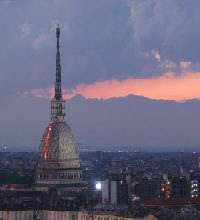+-+Front+cover.jpg)
RE-UPLOAD DI UN ALBUM POSTATO TEMPO FA, IL CUI LINK È RISULTATO "CIMITO": “A CABINET OF CURIOSITIES” DI PAUL ROLAND - UNA VERA “CHICCA” PER INTENDITORI.
Esattamente vent'anni fa veniva pubblicato questo album - che se in tutta Italia lo hanno ascoltato 1000 persone sono anche troppe ... (ma questo lo penso io).
Paul Roland, musicista e scrittore invaghito di letteratura ottocentesca, esoterismo e musica classica, ha infatti l'aria di essere il tipico artista che si trova sperduto nel secolo sbagliato, nel posto sbagliato e che, forse, fa anche il mestiere sbagliato.
Premesso ciò, perché postare allora il suo album "A cabinet of curiosities"?
Semplicemente perché è un'opera di rara bellezza. Come definire lo stile di Roland? Neofolk-psichedelico-gotico .... Mah, chissà. Strumenti acustici e archi si amalgamano, dando vita a pezzi di breve durata, intimisti e riflessivi. Su tutti, secondo il mio gusto, svettano "Wyndham hill", "Walter, the occultist", "Madhouse" e "Jumbee".
Esattamente vent'anni fa veniva pubblicato questo album - che se in tutta Italia lo hanno ascoltato 1000 persone sono anche troppe ... (ma questo lo penso io).
Paul Roland, musicista e scrittore invaghito di letteratura ottocentesca, esoterismo e musica classica, ha infatti l'aria di essere il tipico artista che si trova sperduto nel secolo sbagliato, nel posto sbagliato e che, forse, fa anche il mestiere sbagliato.
Premesso ciò, perché postare allora il suo album "A cabinet of curiosities"?
Semplicemente perché è un'opera di rara bellezza. Come definire lo stile di Roland? Neofolk-psichedelico-gotico .... Mah, chissà. Strumenti acustici e archi si amalgamano, dando vita a pezzi di breve durata, intimisti e riflessivi. Su tutti, secondo il mio gusto, svettano "Wyndham hill", "Walter, the occultist", "Madhouse" e "Jumbee".
Voto personale (scarso / insufficiente / sufficiente / buono / distinto / ottimo / eccellente): Distinto/Ottimo.
RE-UPLOAD OF AN ALBUM POSTED A LONG TIME AGO, THE LINK OF WHICH PROVED TO BE A BAD ONE: A CABINET OF CURIOSITIES” BY PAUL ROLAND - A REAL GEM FOR CONOISSEURS.
This album, which is likely to have been listened to, in Italy, by some 1,000 persons altogether (or, at least, this is what I think) was released exactly twenty years ago.
A musician and writer fond of Nineteenth-Century literature, exoticism and classical music, Paul Roland looks like the typical artist living and being lost in the wrong century and the wrong place and, perhaps, doing the wrong job.
That being stated, why post his album "A cabinet of curiosities", then? Simply because it's an album of rare beauty. How could one label Paul Roland's music? Gothic-psychedelic-neofolk ... Who can tell? Acoustic instruments and strings blend with one another, giving rise to brief, thoughtful and broody songs. Best tracks (in my opinion): "Wyndham hill", "Walter, the occultist", "Madhouse" and "Jumbee".
This album, which is likely to have been listened to, in Italy, by some 1,000 persons altogether (or, at least, this is what I think) was released exactly twenty years ago.
A musician and writer fond of Nineteenth-Century literature, exoticism and classical music, Paul Roland looks like the typical artist living and being lost in the wrong century and the wrong place and, perhaps, doing the wrong job.
That being stated, why post his album "A cabinet of curiosities", then? Simply because it's an album of rare beauty. How could one label Paul Roland's music? Gothic-psychedelic-neofolk ... Who can tell? Acoustic instruments and strings blend with one another, giving rise to brief, thoughtful and broody songs. Best tracks (in my opinion): "Wyndham hill", "Walter, the occultist", "Madhouse" and "Jumbee".
My personal mark (very poor / poor / pass / good / fairly good / very good / excellent): Fairly good/Very good.
TRACK LIST:
1. Madhouse
2. Wyndham hill
3. Jumbee
4. Gary Gilmore's eyes
5. Burn
6. Stranger than strange
7. Walter, the occultist
8. Demon in a glass case
9. Green glass violins
10. Berlin
11. Cairo
12. Madame guillotine (BONUS TRACK)
13. Madeleine (BONUS TRACK)
14. Gabrielle (BONUS TRACK)
15. Happy families (BONUS TRACK)
15. Happy families (BONUS TRACK)
A CABINET OF CURIOSITIES (PAUL ROLAND) - 70,5 MB
+-+Front+cover.jpg)
+-+Front+cover.jpg)
.jpg)
.jpg)
.jpg)






+-+Front+cover.jpg)





















+-+Front+cover.jpg)








+-+Front+cover.jpg)


+-+Front+cover.jpg)
.jpg)
.bmp)


+di+Malciaussia.jpg)

























